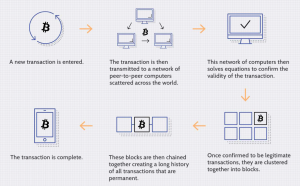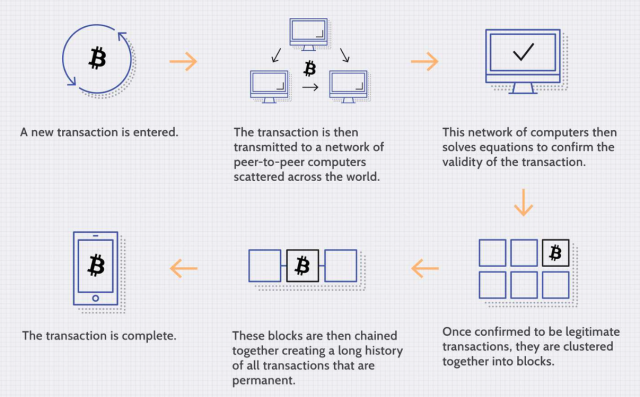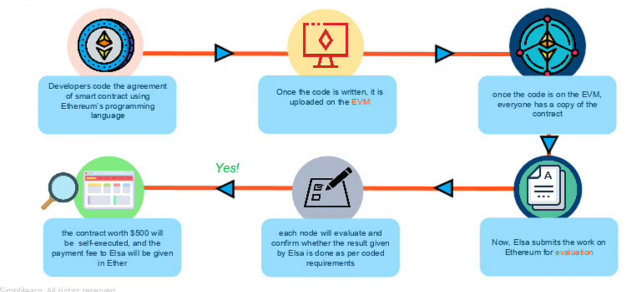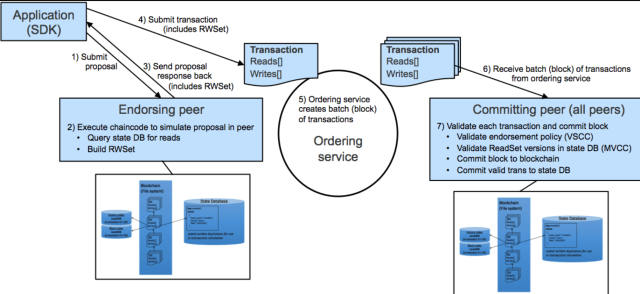
You may have heard of Bitcoin, Ethereum, or even Hyperledger, but what exactly are they? They are all examples of different types of blockchain platforms. In this blog post, we will give a detailed overview of the list of the different types of blockchain platforms and some examples to help you better understand this cutting-edge technology.
Bitcoin Blockchain
Bitcoin is a digital asset and a payment system invented by Satoshi Nakamoto. Transactions are verified by network nodes through cryptography and recorded in a public dispersed ledger called a blockchain. Bitcoin is unique in that there are a finite number of them: 21 million. Bitcoin blockchains function differently from traditional ledgers. For one, they are distributed; meaning that everyone has a copy of the entire blockchain and its history dating back to Bitcoin’s inception in 2009. This decentralization protects Bitcoin against fraud and censorship, as there is no central authority that can control or tamper with it. Secondly, Bitcoin transactions are immutable; meaning they cannot be reversed or deleted once they have been verified by network nodes. This property makes Bitcoin incredibly valuable, as it enables individuals to trust that their transactions will be secure and will remain unchanged.
How does Bitcoin’s blockchain work?
The picture below represents how Bitcoin blockchain works.
There are three main components: Blocks, Miners, and Nodes. Blocks are digital pieces of data that contain information about Bitcoin transactions. Miners verify these transactions and add them to the blockchain for public record-keeping. Nodes store a copy of the blockchain and relay Bitcoin transactions across the network. The Bitcoin blockchain is a public ledger of all Bitcoin transactions that have ever been made. Every time a Bitcoin transaction is made, it is recorded on the Bitcoin blockchain. The Bitcoin blockchain is stored on Bitcoin servers (called “nodes”) all over the world. When someone wants to make a Bitcoin transaction, they send it to the nodes. The nodes then verify the transaction and add it to the Bitcoin blockchain. Bitcoin miners are rewarded with Bitcoin for verifying Bitcoin transactions. They are also rewarded with fees from Bitcoin users for verifying their transactions. The amount of Bitcoin rewards given to miners decreases over time. This system is designed to incentivize miners to continue verifying transactions even when the number of new Bitcoin being created decreases.
Ethereum Blockchain
Ethereum is a public, open-source, decentralized computing platform that allows for the creation of smart contracts and decentralized applications. Ethereum blockchain is a edition of Ethereum that runs on Ethereum Virtual Machine on a peer-to-peer network. It enables developers to create markets, store registries of debts or promises, move funds in accordance with instructions given long in the past like wills or title deeds, and many other things that have not been possible before. Ethereum can be used to codify, decentralize, secure and trade just about anything: voting systems, financial exchanges, crowdfunding platforms, intellectual property, and much more. Ethereum blockchain was launched in 2015 and has since become the world’s second largest blockchain by market capitalization after Bitcoin. Ethereum blockchain is different from Bitcoin’s in that it allows for smart contracts, which are programs that run exactly as programmed without any possibility of fraud or third party interference.
The Ethereum blockchain is a decentralized ledger of all Ethereum transactions. It is constantly growing as “completed” blocks are added to it with a new set of recordings. Each block contains a cryptographic hash of the previous block, a timestamp, and transaction data (generally represented as a Merkle tree root hash). By design, blockchains are inherently resistant to modification of the data. Once recorded, the data in any given block cannot be altered retroactively without changing all subsequent blocks, which requires consensus of the network majority. Ethereum nodes validate transactions they receive and each node builds its own copy of the Ethereum blockchain. When completed, this newly validated block is added to an ETHEREUM SHARD in every connected Ethereum node so that every Ethereum node keeps its own up-to-date copy of all Ethereum shards including every valid transaction that has ever taken place on Ethereum.
How does Ethereum blockchain work?
The picture below is a representation of how Ethereum works:
Ethereum blockchain consists of nodes that are each running an Ethereum Virtual Machine (EVM), which executes smart contracts. The EVM makes it possible to write code that runs exactly as intended without the risk of fraud or third-party interference. This makes it ideal for mission-critical applications . The Ethereum blockchain is programmable, which means that developers can build decentralized applications (dapps) on top of it. These dapps can be built on top of Ethereum’s decentralized infrastructure and run exactly as programmed without any possibility of downtime, fraud or third party interference. Ethereum has often been described as a trustless platform because it enables users to interact with each other without the need for an intermediary. In addition to being trustless, Ethereum is also censorship resistant because no one can prevent transactions from being processed on the Ethereum network. Ethereum is still in its early stages and is not yet as widely adopted as Bitcoin. However, it has seen rapid growth in recent years and has attracted a large community of developers and users.
Hyperledger Fabric Blockchain
Hyperledger Fabric is a blockchain platform for enterprise development. Hyperledger Fabric allows developers to create applications or solutions with a modular architecture. Hyperledger Fabric is intended as a foundation for developing applications or solutions with a pluggable implementation of components, APIs and smart contracts. It uses container technology to host smart contracts called “chaincode” that comprise the application logic of the system. It is supported by a number of major technology firms and is one of the Hyperledger projects hosted by the Linux Foundation.
How does Hyperledger Fabric blockchain work?
The basic components of Hyperledger Fabric are as follows:
- Centers for Excellence: These are the organization which create and support the network. There can be multiple Centers for Excellence in a Hyperledger Fabric deployment
- Nodes: A Hyperledger Fabric Node is defined as an instance of the Hyperledger Fabric software running on any server machine. A node comprises several sub-components, each of which implements a unique role within the Hyperledger Fabric network.
- Orderer nodes: Orderer nodes broadcast transactions to peers in a FIFO order after validating them against an ordering service protocol. This service is provided by an ordering service node, which can be deployed as a standalone component or co-located with an application peer node
- Peer nodes: Peer nodes maintain a ledger comprising any state transitions submitted by application client nodes associated with that peer. In addition, all peers execute and endorse smart contracts, thereby updating the ledger with new state transitions
- User nodes: User nodes are also called client nodes. User nodes initiate transactions that are eventually committed to the ledger maintained by peer nodes
The picture below represents workflow of how a transaction gets committed in Hyperledger fabric blockchain (picture courtesy: investopedia):
Hyperledger fabric uses container technology to host smart contracts called “chaincode” that comprise the application logic of the system. What this means is that every time a transaction is made on the Hyperledger fabric blockchain, it first has to be approved by each chaincode container in every peer node on the network before it can be written onto the ledger and committed as a valid transaction block. Because each chaincode contains code that governs how data gets read and written onto the ledger, multiple chaincodes can exist side-by-side on a single Hyperledger fabric network without conflicting with each other’s operation – something that would not be possible on a traditional shared database model where there is only one place for writing data. This side-by-side existence of multiple chaincodes is what provides Hyperledger fabric its modularity, allowing different components of an application to be upgraded or swapped out without affecting other components of the application – giving rise to its much touted promise “plug-and -play” blockchain components.
R3 Corda Blockchain
R3 Corda is a blockchain platform that enables financial institutions to transact directly and privately with each other. Unlike other blockchain platforms, R3 Corda does not rely on a centralized authority to validate transactions. Instead, R3 Corda uses a distributed network of node operators, who each maintain a copy of the transaction history. When a new transaction is proposed, the node operators validate it against the existing history to ensure that it is valid. Once a transaction has been validated, it is added to the shared transaction history and cannot be modified or deleted. R3 Corda also supports smart contracts, which are self-executing contracts that automatically enforce the terms of an agreement. R3 Corda is unique in its ability to support private transactions between parties while still maintaining the security and transparency of blockchain.
R3 Corda is different from other DLT platforms in that it uses a “permissioned” or “private” ledger, which means that only authorized users have access to the data on the ledger. R3 Corda also uses a “gossip” protocol to disseminate information about transactions across the network, which helps to ensure that all participants have the same data.
Quorum Blockchain
Quorum is a fork of the Ethereum blockchain that is designed for enterprise use cases. Quorum is an open source project that is maintained by a community of developers from around the world. Quorum is a permissioned blockchain, meaning that only authorized nodes are able to join the network and participate in consensus. It also includes features such as private transactions and voting-based consensus. Quorum is well suited for applications that require high degrees of security and privacy, such as supply chain management and financial services. It is built on top of the Java Virtual Machine, making it easy to develop and deploy smart contracts. Quorum can be used to build decentralized applications that run on a secure and tamper-proof platform. It is an excellent choice for enterprises that need a robust and scalable blockchain platform.
Quorum is based on the GoQuorum fork of Ethereum and Quorum can process private transactions using transaction and contract privacy features. Quorum consensus algorithms are pluggable so various Byzantine Fault Tolerant consensus mechanisms can be used, such as QuorumChain’s Istanbul BFT or raft-based consensus. Quorum supports per-transaction/contract privacy through peer-to-peer communication between signers using an encrypted message passing system called Tessera. Quorum can be deployed in a wide variety of configurations such as single member networks, voting based multi-member networks, and consortium networks.
EOSIO Blockchain
EOSIO is a blockchain protocol that enables horizontal scaling of decentralized applications, allowing an unlimited number of transactions with negligible fees. EOSIO achieves this by using a Delegated Proof-of-Stake consensus mechanism with no race conditions and minimal forks. EOSIO is designed to provide scaling solutions that can be found at the EOS Developer Portal which includes forums, specific numbered EIPs, bounties, toolkits and more. The EOS public blockchain uses EOSIO software and launched its Mainnet on June 2, 2018. EOSIO is open source and released under the MIT license. Dan Larimer created EOSIO and is also the CTO of Block.one, the company that developers the EOSIO software. He has also been involved in creating other successful projects such as BitShares and Steemit.
EOSIO enables horizontal scalability of decentralized applications (dApps) and decentralized autonomous organizations (DAOs). EOSIO is powered by the native cryptocurrency EOS, which is used to pay for transaction fees on the network. Block producers are elected by EOS token holders and produce blocks in rounds of 21. Block producers are compensated for their work with EOS tokens.
EOSIO offers a number of advantages over other blockchain protocols, including the ability to process millions of transactions per second, zero transaction fees, and low latency. In addition, EOSIO is designed to be user-friendly, with an easy-to-use application programming interface (API) that makes it simple for developers to build dApps on the EOSIO platform.
Multichain Blockchain
Multichain is an open source blockchain platform that allows for the creation and deployment of private blockchains. It is similar to other blockchain platforms such as Ethereum and Hyperledger Fabric, but with a few key differences. Multichain uses a “permissioned” or “private” model, meaning that only authorized users can access the blockchain. This makes Multichain well-suited for enterprise use cases where privacy and security are paramount. Multichain also offers an increased degree of flexibility, allowing for custom parameters and configurations to be set for each blockchain. Finally, Multichain is designed to be scalable, allowing for a large number of transactions to be processed quickly and efficiently.
Multichain allows for the creation of private blockchains that can be permissioned or permissionless. Multichain supports various consensus mechanisms, such as Proof of Work (PoW), Proof of Stake (PoS), and Practical Byzantine Fault Tolerance (PBFT). Multichain also supports smart contracts and atomic swaps. Multichain’s unique features make it a powerful tool for businesses and organizations looking to create their own blockchain applications.
How does Multichain blockchain work?
Multichain works by creating a stream of blocks, each of which contains a cryptographic hash of the previous block, a timestamp, and transaction data. Each block is then verified by nodes in the network using the consensus mechanism. Once a block is verified, it cannot be changed or reversed. This makes Multichain’s blockchain immutable and secure.
IOTA Tangle
IOTA Tangle is a next-generation distributed ledger technology designed to provide scalable, secure, and feeless data transmission. It is a distributed ledger technology that is an alternative to the traditional blockchain. IOTA Tangle is quantum-resistant and scalable, making it perfect for IoT applications. IOTA Tangle works by allowing each user to verify two previous transactions, which creates a web of vertexes and edges. IOTA Tangle is also scalable because there are no miners or blocks, so the more users there are, the faster the transactions can be verified.
IOTA Tangle is designed to be flexible, so that new features can be added easily. This makes it ideal for applications that need to be quickly updated, such as IoT devices.
Stacks Blockchain
Blockstack is a public, decentralized blockchain that enables people to build apps that run on the Blockstack network. Blockstack got new name such as Stack. It is an open-source platform to enable smart contracts, DeFi, NFTs, and apps for Bitcoin. Blockstack apps are powered by Blockstack’s native token, called STX. Blockstack’s blockchain is secured by a network of distributed nodes, which are operated by Blockstack users. Blockstack’s consensus protocol incentivizes nodes to reach consensus on the order of transactions and the state of the network. Blockstack’s blockchain stores data in a decentralized manner, meaning that data is stored on the nodes in the Blockstack network rather than on a central server.
Hedera Hashgraph Platform
Hedera Hashgraph is a distributed ledger technology that offers a new way of achieving consensus in a decentralized network. Unlike traditional blockchain technologies, Hedera is built on a Directed Acyclic Graph (DAG) data structure, which allows it to achieve high transaction throughput while maintaining low latency. Hedera’s consensus algorithm, known as the Hedera Consensus Service (HCS), is also based on the DAG data structure. Hedera achieve consensus without the need for miners or stakers. This allows Hedera to offer high-throughput and low-latency capabilities while maintaining security and decentralization. In addition, Hedera provides a platform for developers to build applications on top of the Hedera network. These applications can take advantage of Hedera’s high-throughput and low-latency capabilities to offer innovative new services to users.
Hedera’s technology is based on “gossip about gossip”, whereby each node in the network independently selects a small set of other nodes to share information with. In this way, Hedera achieves fast and efficient consensus without the need for a central authority.
Conclusion
There are many blockchain platforms out there, but Bitcoin and Ethereum are the most well known. If you’re looking for a platform that is more private, Hyperledger fabric may be a better choice for you. Let me know if you would like to learn more about any of these platforms or need help getting started with blockchain technology. I’d be happy to help! I would be updating this list from time-to-time.
- Coefficient of Variation in Regression Modelling: Example - November 9, 2025
- Chunking Strategies for RAG with Examples - November 2, 2025
- RAG Pipeline: 6 Steps for Creating Naive RAG App - November 1, 2025



I found it very helpful. However the differences are not too understandable for me